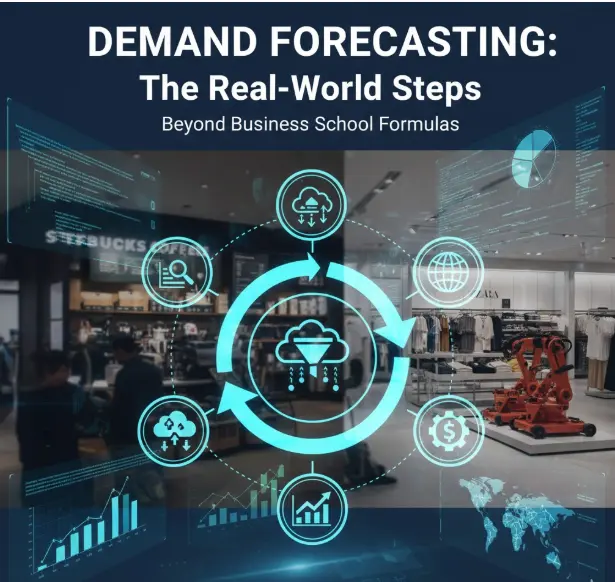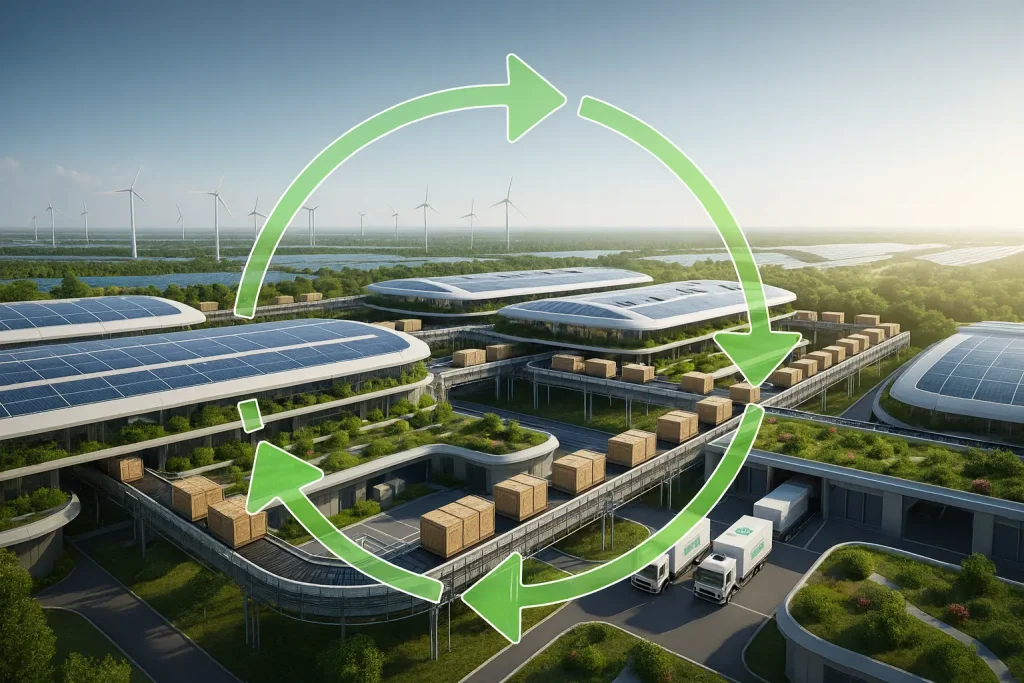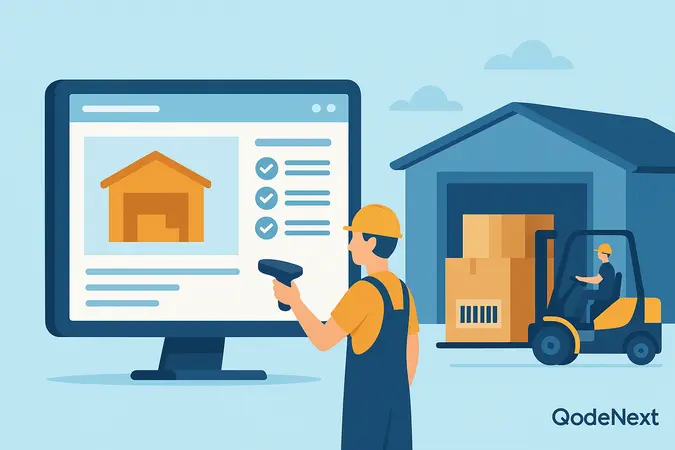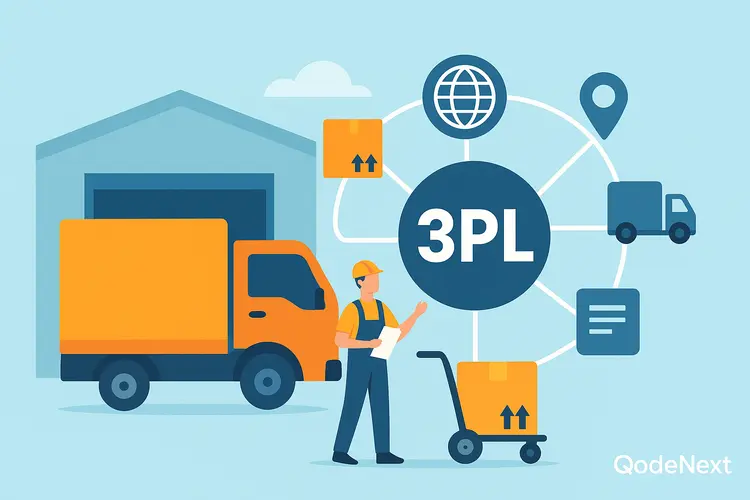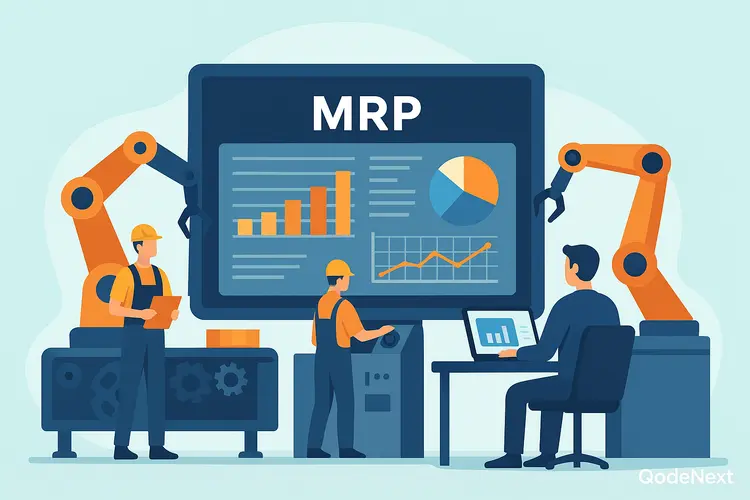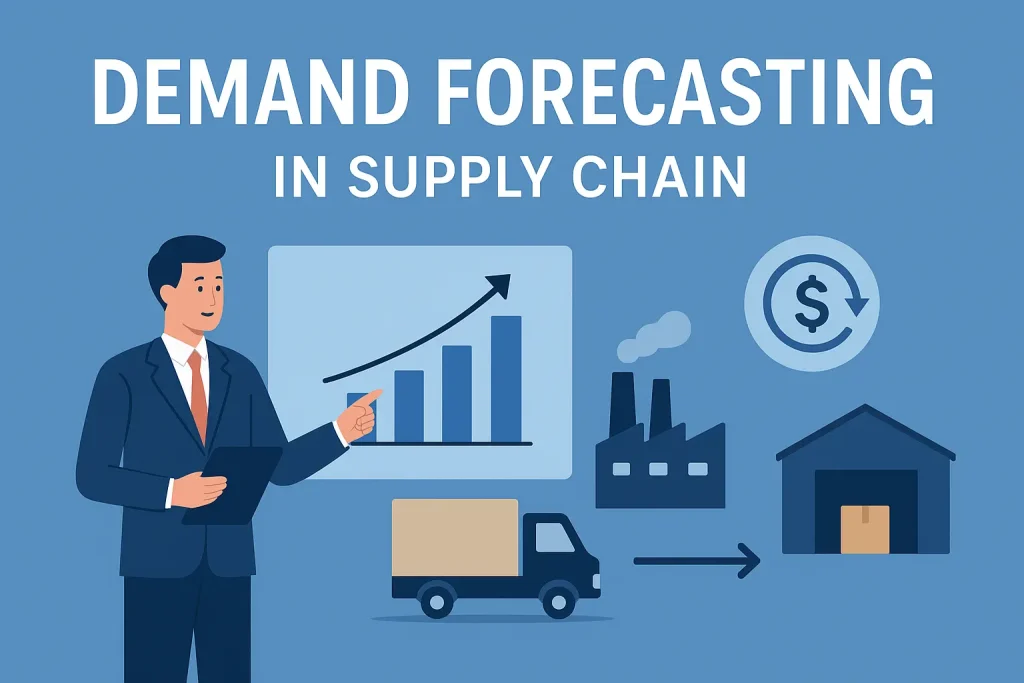Knowing what your customers will want tomorrow is the key to making every good business decision, like how much to make, when to restock, or what price to set.
It’s not magic that lets you “see ahead.” It’s demand forecasting.
But here’s the thing: most business school classes on forecasting teach formulas instead of frameworks. They’ll show you the models, like regression, time series, and moving averages, but they won’t talk about how businesses really use forecasting in the real world, which is messy and unpredictable.
That’s why we need to look at the steps in demand forecasting again, not as things to check off on a list, but as a process that businesses like Apple, Zara, and Amazon use every day to stay ahead.
Let’s look at what really happens and what business schools should have taught us all along.
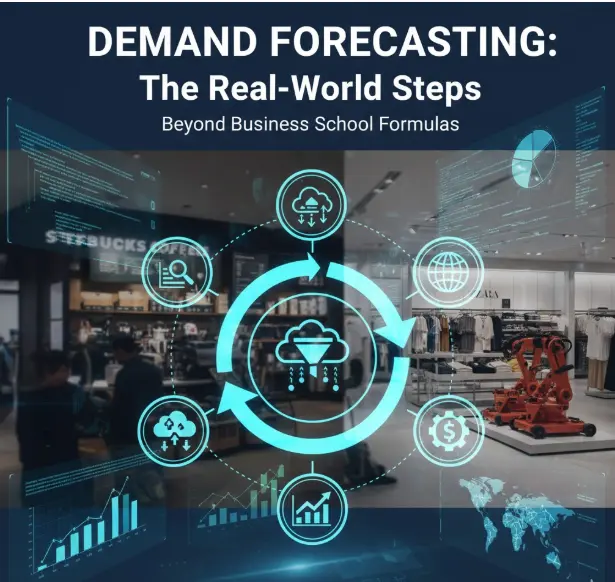
What is demand forecasting, and why is it more important than ever?
Let’s get one thing straight before we look at the steps involved in demand forecasting: it’s not about predicting the future; it’s about getting ready for it.
Using past data, market trends, and educated guesses, demand forecasting is the process of predicting how much of a product or service will be needed in the future.
In other words, it’s about making sure that the right product gets to the right place at the right time, without running out or having too much.
In the real world, accurate forecasting means:
- A manufacturer doesn’t throw away raw materials.
- During the holidays, a store tries to keep its shelves full.
- Delivery delays don’t make people stop buying from an online store.
If done correctly, forecasting is more than just an analytical task; it’s a strategic superpower.
Why Traditional Teaching Doesn’t Work
In business schools, the steps in demand forecasting in BEFA (Business Economics and Financial Analysis) are often taught as a straight line: gathering data, looking at it, making an estimate, and checking it.
But in real life, forecasting isn’t that easy. Data from the real world is messy. People’s buying habits change overnight. And no one model works for every market.
Demand forecasting doesn’t follow a straight line; instead, it follows a feedback loop. Forecasting is both an art and a science because companies are always improving their predictions as new information comes in.
Let’s look at these steps in the way that businesses really use them today.
Step 1: What is the goal of forecasting?
“Why are we forecasting?” is a simple but powerful question that starts every forecasting exercise.
Are you making predictions about sales for next quarter? Are you getting ready to launch a new product? Figuring out how many people you need?
The goal shapes everything, from the data you gather to the model you use.
For example:
A store may guess how much it will sell each week to plan how to restock.
A manufacturer can plan their capacity and raw materials by predicting how much demand there will be each year.
A financial analyst might use forecasting to figure out how much money a company will make and how fast it will grow.
Even the most advanced forecast is just a guess without a clear goal.
Step 2: Finding and Gathering Data
Data is the most important part of making predictions, but it’s also the part that people get wrong the most.
Textbooks make it sound easy by saying “collect historical data,” but in reality, businesses get data from many different places that aren’t always connected.
This is what this stage really means:
Internal Data: Sales, prices, and inventory levels from the past.
External Data: changes in the market, moves by competitors, and big-picture economic factors.
Customer Data: What they buy, when they buy it, what they think, and what they like.
Zara, for instance, gets feedback from stores in real time and uses it to improve its demand forecasting process. This lets it respond more quickly than other fashion brands.
So, the second step in demand forecasting isn’t just about how much data you have; it’s also about how good and useful it is.
Step 3: Looking at the Data
The next step is to figure out what the data means after it has been collected.
This is where analysts figure out what’s noise and what’s insight by finding important trends, patterns, and relationships.
Companies usually ask:
- Are sales seasonal or cyclical?
- Do prices affect how much people want something?
- What effect do sales have on holidays, promotions, or the weather?
Students learn about models like regression and moving averages in BEFA. But in real life, it’s usually a mix of gut feelings and data.
For instance, Amazon uses AI-powered models to find small trends, such as how sudden changes in search patterns can mean that demand will soon rise.
This stage is very important because it combines math with market intuition.
Step 4: Picking the Method for Making Predictions
Choose the right way to make predictions once you understand the data.
This is one of the most talked-about steps in demand forecasting because there is no one-size-fits-all way to do it for all products or industries.
Here’s a simple way to look at how businesses make decisions:
| Method | Best For | Example |
| Qualitative (Judgmental) | New products or markets with little data | Expert opinions, Delphi method |
| Time Series Analysis | Stable markets with clear historical data | Sales patterns for FMCG items |
| Causal Models | When external factors drive demand | Fuel demand linked to oil prices |
| Machine Learning models | Complex, high-volume data | E-commerce and supply chain forecasting |
This stage of demand forecasting in BEFA is often just a theory. But in the real world, businesses often mix methods, using machine learning to predict volume and human insight to confirm trends.
Step 5: Making the prediction and estimating it
Now comes the fun part: making the prediction itself.
This means using the model you chose to make predictions about future demand based on your data.
A normal forecast has:
- Expected number of sales
- Predictions for revenue
- What you need in stock
- Needs for resources and workers
But here’s something that business schools don’t stress enough: forecasts are living documents. They change as new information comes in.
For instance, a business might change its forecast every week based on things like customer orders, social media sentiment, or even changes in the weather.
It’s not a one-and-done exercise to forecast demand; you have to do it over and over again.
Step 6: Checking the Forecast
It’s not time to celebrate yet that you have a forecast. The next step is to check how accurate and realistic your prediction really is.
Businesses use metrics like these to compare predicted data with actual performance:
- MAPE (Mean Absolute Percentage Error)
- Root Mean Square Error (RMSE)
- The Bias/Error Ratio
This helps figure out if the forecast is too low or too high for demand, and why.
Walmart is a great example of a company that uses AI to constantly check forecasts for more than 200 factors, such as the weather, local events, and how long products are on the shelf.
That’s the difference between a good forecast and a reliable one.
Step 7: Looking over the results, making changes, and letting people know
The last step in the demand forecasting process is to close the loop.
After being checked, the results must be:
- Reviewed by cross-functional teams – sales, marketing, and finance.
- Adjusted based on new insights or market shifts.
- Communicated across the organization to align decision-making.
For instance, if the demand for a product is expected to go up by 20%, procurement changes the orders for raw materials, logistics changes the shipments, and marketing gets ready for inventory sales.
The system works best when forecasting and execution are combined, which is something that business schools don’t often talk about.
Starbucks’ Demand Forecasting in Real Life
Starbucks is a great example of how to use the steps in demand forecasting in a flexible way.
This is how they do it:
- Get data from thousands of stores and mobile apps.
- Use predictive analytics to forecast customer footfall and beverage demand daily.
- Adjust ingredient orders and staffing levels in real time.
The result? Reduced waste, better inventory control, and faster customer service.
Their forecasting model changes every hour, not every year. This shows that the steps in demand forecasting change as technology and data flow change.
Common Mistakes Businesses Make in Forecasting
Even the best models fail if the fundamentals aren’t right. Here are frequent pitfalls to avoid:
Not paying attention to qualitative insights: Data without context misses signals like new trends.
- Overfitting models: Making predictions that work on paper but fail in reality.
- Not working together: Predictions made in silos don’t match up with what happens.
- Skipping updates: Treating forecasts as static documents instead of dynamic tools.
- Relying only on software: Human interpretation still matters.
Demand forecasting isn’t about being perfect. It’s about being proactive.
Why These Steps Matter More in 2025
With global supply chains facing volatility, the ability to forecast accurately is now a survival skill.
AI, real-time analytics, and digital twins are changing how the steps in BEFA’s demand forecasting are put into practice.
- Forecasting in the present day:
- Incorporates live data feeds
- Predicts disruptions before they occur
- Links directly with production and distribution planning
Businesses that master these steps don’t just respond to market demand — they shape it.
Conclusion
When you strip away the equations, the essence of forecasting is simple: understanding people – what they want, when they want it, and why.
The steps in demand forecasting aren’t just a sequence of calculations; they’re a continuous feedback loop between data, intuition, and action.
What business schools often miss and what top companies understand is that forecasting is less about numbers and more about narratives. It’s about connecting patterns in data to behavior in the real world.
Master these steps, and you’re not just predicting the future – you’re building it.
FAQs: Real Steps in Demand Forecasting Every Manager Should Know
1. What are the main steps in demand forecasting?
They include defining the purpose, collecting data, analyzing trends, choosing a method, generating forecasts, validating results, and reviewing for continuous improvement.
2. What are the steps involved in demand forecasting in BEFA?
In BEFA, the process includes defining objectives, data collection, estimation, analysis, and evaluation — similar to business applications but often more theoretical.
3. Which method is best for demand forecasting?
It depends on data type. Qualitative methods work for new products; quantitative methods like time series fit stable markets.
4. How often should forecasts be updated?
Leading businesses update forecasts weekly or monthly to reflect real-time demand changes.
5. What tools are used for forecasting?
Popular ones include SAP IBP, Oracle Demantra, and AI-based models integrated with ERP systems.
